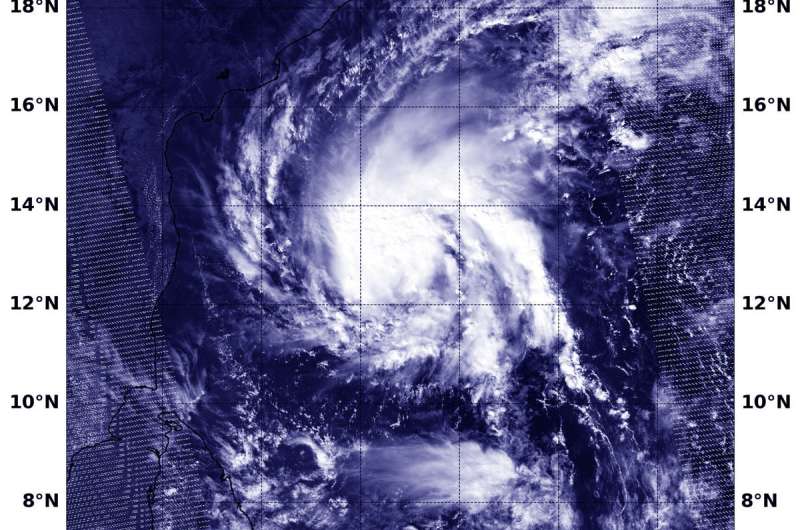Tropical Cyclone Gaja approaching Southeastern India

Tropical Cyclone Gaja continued to track toward a landfall in southeastern India when NASA-NOAA's Suomi NPP satellite flew over the Bay of Bengal and provided a visible image of the storm.
Suomi NPP passed over Gaja on Nov. 14 at 2:36 a.m. EDT (0736 UTC) and the VIIRS instrument provided a visible image. The VIIRS image showed Gaja appeared more organized than the previous day as powerful thunderstorms circled the center. A thick band of thunderstorms wrapped into the low level center from the eastern quadrant.
At 4 a.m. EDT (0900 UTC) Tropical Cyclone Gaja was located near 12.6 degrees north latitude and 84.5 degrees east longitude. That's about 623 nautical miles south-southwest of Calcutta, India. Gaja is moving to the west-southwest and has maximum sustained winds near 45 knots (52 mph/83 kph).
The Regional Specialized Meteorological Center for Tropical Cyclones over the Northern Indian Ocean or RSMC has issued a tropical storm warning for southern India. For updates visit: http://www.rsmcnewdelhi.imd.gov.in/index.php?lang=en
The Joint Typhoon Warning Center or JTWC forecasters expect Gaja to track over the southern Indian Peninsula, where may likely hold together and reach the Arabian Sea.
Provided by NASA's Goddard Space Flight Center




















